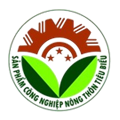
Agricultural products in many places are congested, farmers here still expand cocoa growing areas during the epidemic season
Although the Covid-19 epidemic caused many agricultural supply chains to be broken, Trong Duc Cocoa Company in Dinh Quan district (Dong Nai) still expanded the cocoa growing area even during the epidemic season.
This is considered a bold step by cocoa processing enterprises to maintain the supply chain when many other industries are having a headache about reinvesting in production.
Expand cocoa growing area right in the epidemic season
The expansion of the cocoa raw material area is actually in the long-standing strategy of Trong Duc Company. Especially in the context of the current epidemic, many supply chains in the agricultural industry are broken.
Previously, Trong Duc Company had developed a material area of 1,300 hectares in the Southeast provinces and 100 hectares in Laos.
It was not until May that Mr. Dang Tuong Khanh - Director of the Company took the first step when expanding the planting area to the Central Highlands provinces.
The first project with an area of 18ha was deployed in Po To commune, Ia Pa district, Gia Lai province.

Mr. Dang Tuong Khanh started planting the first cocoa trees on Gia Lai land. Photo: Nguyen Vy
Mr. Khanh assessed that the world's cocoa raw materials will still be in short supply in the near future. That is the reason that the company is still confident to expand the raw material area.
After the field survey, Mr. Khanh said, Gia Lai people mainly grow sugarcane and noodles. Economic efficiency is not high; only 30-35 million VND/ha per year.
Meanwhile, cocoa farmers in Dong Nai earn 80 million VND/ha per year which is normal.

However, in Dong Nai and the eastern provinces, people have many crops to choose from. The development of material areas will not be rapid. The terrain in Gia Lai has many advantages because the land is still wide and has conditions for mechanization.
Therefore, Trong Duc hopes to quickly establish linkages with the people here to expand the raw material area and product consumption as has been successfully implemented since 2005 until now in Dong Nai.

Mr. Nguyen Van Nho, a farmer in Po To commune, said that in addition to growing industrial crops, local people also outsource livestock farming for businesses.
The form of animal husbandry outsourcing gives income from 4.2-5.5 million VND/month, people only temporarily make a living.
"Cocoa trees do not help farmers get rich quickly, but the market is stable. When the project develops, it will create more opportunities for people in the area," said Mr. Nho.
Cultivation recovery
Although it has only been deployed for a few months, Trong Duc cocoa has connected quite quickly with the people here in all stages of cultivation and initial technical processes.

Khanh said, growing cocoa in the Central Highlands has two major problems that need to be overcome, which is a lot of wind, which affects the development of seedlings. Second is the lack of water for irrigation.
In parallel with planting new cocoa trees, Mr. Khanh planted many different types of trees to create enough high, middle and low floors. This creates both an ecosystem and a windbreak for the cocoa tree. Even the grasses are kept.
Many people fear that grass will compete with plants for nutrients, but Mr. Khanh thinks differently. If the cocoa tree needs 2 ounces of fertilizer, then increase it to 3 ounces. Grass and cocoa have enough food so they do not compete with each other, but the cost is not too great.
When grass is high, it is cut to add biomass to make organic fertilizer in contrast to cocoa. "This is a way to follow the direction of recovery farming, ensuring sustainability for trees and soil," explained Mr. Khanh.


To help young plants grow well in the early stages, drip irrigation technology will help save water without spending too much.
Not only stopping at Gia Lai, in the future, Trong Duc Company will also expand the raw material area to many neighboring provinces such as Kon Tum, Phu Yen, Binh Dinh and Quang Ngai.

"Once they have the initiative in the source of raw materials, domestic factories are completely confident in processing for export to obtain high value; rather than raw export mostly like now," Mr. Khanh shared.
According to the Vietnam Coffee and Cocoa Association (Vicofa), Vietnam's cocoa bean output is still modest, only about 5,500 tons compared to 4.8 million tons in the world.
However, cocoa beans from Vietnam are recognized as having good fermentation quality. This is possible thanks to the methodical development plan as well as the typical climatic conditions of our country.

Mr. Luong Van Tu - Chairman of Vicofa said that the fact that the cocoa growing area in the whole country has decreased significantly. In 2012, the whole country planted 25,700 ha, by 2020 only about 5,000 ha.
Cocoa area decreased sharply in provinces such as Ben Tre, Tien Giang, Dak Lak, Binh Phuoc, Lam Dong... due to inappropriate selection of planting areas, as well as limitations in planting techniques. [ nbsp]
However, in provinces such as Dong Nai, Ba Ria-Vung Tau..., cocoa still retains its own place and is increasingly stable.
Tu shared, cocoa processing companies through association and expansion of clean raw material areas are still contributing to affirming the quality of Vietnamese cocoa in the world.
Propaganda on the implementation of Resolution 84/NQ - CP dated May 29, 2020 of the Government.






















